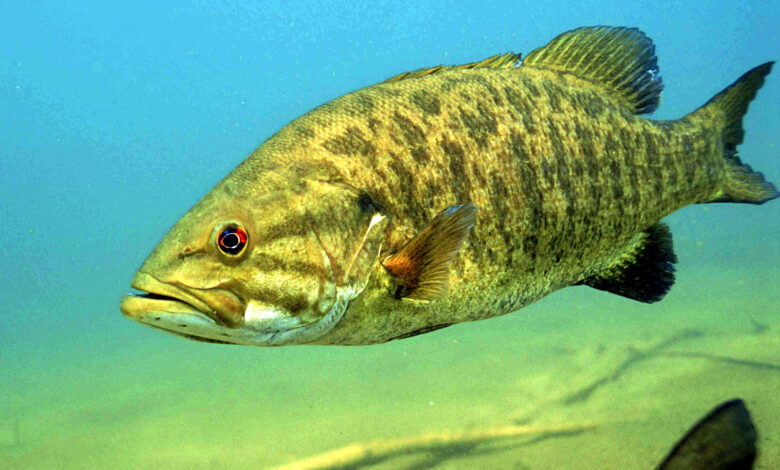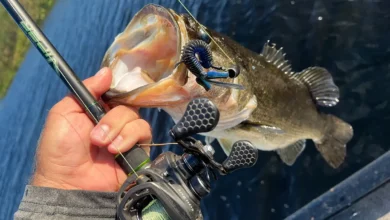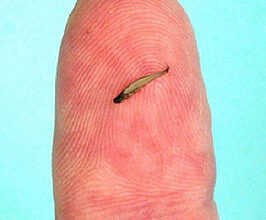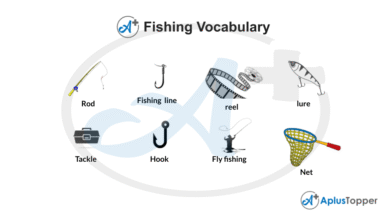Why Do Smallmouth Bass Have Red Eyes? A Closer Look at This Striking Feature

Have you ever been out fishing, reeled in a beautiful smallmouth bass, and noticed its glowing red eyes staring back at you? It’s a sight that surprises many anglers. Those fiery eyes make smallmouth bass look fierce and mysterious, but they also raise a simple question—why do they have red eyes in the first place?
Smallmouth bass are already a favorite among anglers for their fighting spirit and aggressive strikes. Add in their unique red eyes, and you get a fish that stands out both for its behavior and appearance. In this article, we’ll dive deep into the science, myths, and fishing stories surrounding the smallmouth bass and its red eyes.
The First Impression: A Fish That Looks Fierce
When you catch a smallmouth bass, one of the first things you’ll notice is how lively and strong it feels on the line. These fish don’t give up easily. But once you bring them close and look into their eyes, that bold red glow is unforgettable.
The red eyes of a smallmouth bass often make them look more aggressive compared to largemouth bass. Many anglers joke that the eyes match their fighting attitude. Whether it’s a bright crimson hue or a deep copper tone, the eyes are part of what gives the smallmouth bass its iconic appearance.
Not Every Smallmouth Bass Has Bright Red Eyes
One interesting thing is that not every smallmouth bass has red eyes. Some have more of an orange, amber, or even dark brown look. The intensity of the eye color often depends on a combination of factors like age, genetics, environment, and even the water where they live.
Anglers fishing in clear northern lakes often notice bass with fiery red eyes, while fish from other regions may have duller shades. This variety makes every catch a little different and adds to the excitement of targeting smallmouth.
The Science Behind Red Eyes
So, what causes smallmouth bass to have red eyes? The answer lies in pigmentation and biology.
Fish eyes contain pigments that react to light. In smallmouth bass, certain pigments reflect a reddish hue, which becomes more noticeable under specific lighting conditions or in clear waters. This adaptation might even help them see better in low-light environments, such as deeper waters or shaded rocky areas.
Just like human eye color varies from person to person, fish eye color also varies across populations. For smallmouth bass, red is the most common and striking variation, but not the only one.
Do Red Eyes Make Smallmouth Bass Better Hunters?
It’s a fun question many anglers wonder about. Do red eyes give smallmouth bass any special hunting advantage? While there’s no conclusive evidence that the red pigment makes them more effective predators, their vision certainly plays a role in their success.
Smallmouth bass rely heavily on sight to ambush prey like crayfish, minnows, and insects. Their sharp eyesight allows them to detect movement and strike with precision. The red color might not make them superior hunters, but their visual system as a whole gives them an edge in their rocky, clear-water habitats.
Habitat Connection: Clear Water and Red Eyes
If you’ve ever fished for smallmouth bass in different environments, you might have noticed something: the clearest lakes often produce bass with the most striking red eyes.
Clear water requires fish to rely more on vision than smell or vibration. Because of this, eye adaptations—including color—may be more pronounced. In murkier water, the intensity of eye color seems less noticeable. This could explain why smallmouth bass from northern, crystal-clear lakes tend to have those glowing red eyes that anglers admire so much.
Myths and Legends About Smallmouth Bass Red Eyes
Like many features in the fishing world, red eyes have inspired myths and tall tales. Some anglers claim that red-eyed bass are meaner fighters. Others believe that if you catch one with especially bright red eyes, it’s a sign of good luck on the water.
While science may not back up those claims, the stories add to the fun of fishing culture. It’s part of what makes chasing smallmouth bass such a unique experience—every fish tells a story, and their fiery gaze makes the tale more memorable.
The Difference Between Smallmouth and Redeye Bass
Here’s where things get interesting. There’s actually a fish species called the redeye bass, and many people confuse it with smallmouth bass that happen to have red eyes.
The redeye bass (Micropterus coosae) is a different species altogether, found mostly in rivers of the southeastern United States. While smallmouth bass (Micropterus dolomieu) can also have red eyes, they are not the same fish. The confusion comes from the overlapping eye color trait.
So, if you hear an angler talking about catching a “red eye,” it’s worth asking whether they mean a smallmouth bass with bright eyes or the separate redeye bass species.
Anglers’ Perspective: Why Red Eyes Stand Out
For anglers, the red eyes of smallmouth bass are more than a biological curiosity—they’re part of the thrill. When someone pulls a smallmouth out of the water, those eyes often become the subject of conversation.
Some fishermen even use it as a quick way to identify the species, especially when bass come out of mixed waters where largemouth and smallmouth coexist. The red eyes, combined with the bronze-green body and vertical bars, make identification easier.
Red Eyes and Spawning Season
Another factor influencing eye color intensity could be spawning. During the breeding season, fish often show more vibrant colors overall. Smallmouth bass males, in particular, develop darker bodies and sometimes even brighter eyes as they guard nests.
This seasonal change might explain why some anglers report catching bass with incredibly fiery eyes in spring compared to other times of the year. It’s nature’s way of boosting their appearance for reproductive success.
Comparing Largemouth and Smallmouth Eyes
Many people confuse largemouth and smallmouth bass, but their eyes help tell them apart. Largemouth bass usually have darker, less intense eye colors, ranging from golden to brown. Smallmouth bass, on the other hand, often sport that unmistakable red tint.
If you’re trying to quickly identify your catch, looking at the eyes along with the jawline (smallmouth jaws do not extend past the eye, while largemouth jaws do) is a reliable method.
Do Anglers Target Red-Eyed Smallmouth More?
Interestingly, some anglers say they love catching red-eyed smallmouth more because they look so unique. While the fight and size of the fish are the main attractions, the visual beauty of a red-eyed smallmouth adds something extra to the experience.
It’s almost like finding a rare gem, even though many smallmouth have red eyes. The thrill of pulling one from crystal-clear water and seeing those glowing eyes in the sunlight is a moment many anglers treasure.
Conservation and Appreciation
Like all fish, smallmouth bass play an important role in aquatic ecosystems. Their presence in rivers and lakes often indicates a healthy environment. Protecting their habitats ensures future generations of anglers will get to experience the excitement of meeting those fiery red eyes face-to-face.
Catch-and-release practices, habitat protection, and responsible fishing help keep these populations strong. After all, the joy of seeing a red-eyed smallmouth isn’t just for today—it should be there for tomorrow as well.
Why People Find Red-Eyed Smallmouth So Memorable
At the end of the day, red eyes in smallmouth bass are not just about science. They’re about connection. Anglers form memories around them, share stories, and pass down traditions of fishing trips where those fiery eyes were part of the tale.
It’s not unusual for someone to recall their first smallmouth catch years later, describing not just the fight but also the unforgettable eyes staring back at them. This emotional bond is part of what makes fishing such a timeless hobby.
Final Thoughts: A Small Feature With a Big Impact
So, why do smallmouth bass have red eyes? The answer lies in genetics, habitat, and biology, but the impact goes far beyond science. Those glowing eyes make the fish more striking, more memorable, and more loved among anglers.
Every time a fisherman talks about the fight of a smallmouth, the sparkle in their eyes often mirrors the fire in the fish’s. It’s a reminder that sometimes, small details in nature—like the eye color of a fish—carry big meaning.
The next time you hook a smallmouth and see those red eyes glimmering in the sun, take a moment to appreciate them. They’re not just a biological quirk. They’re a symbol of the wild, untamed spirit that makes fishing such a thrill.



